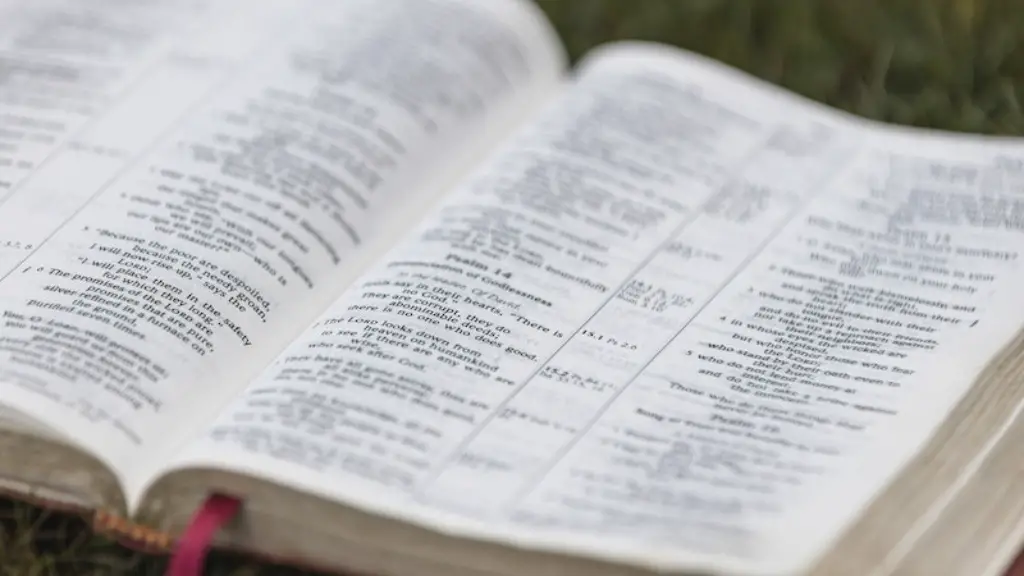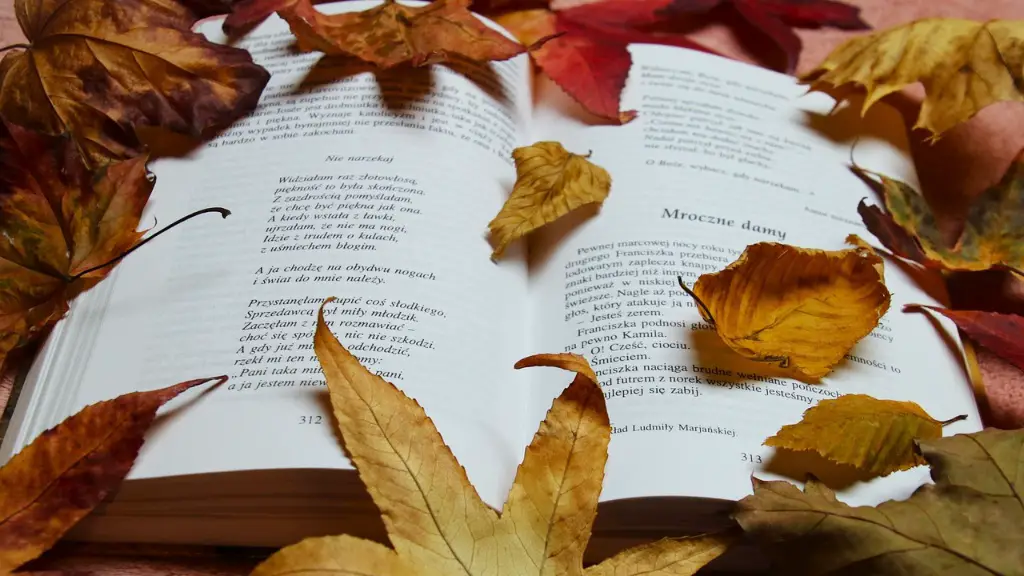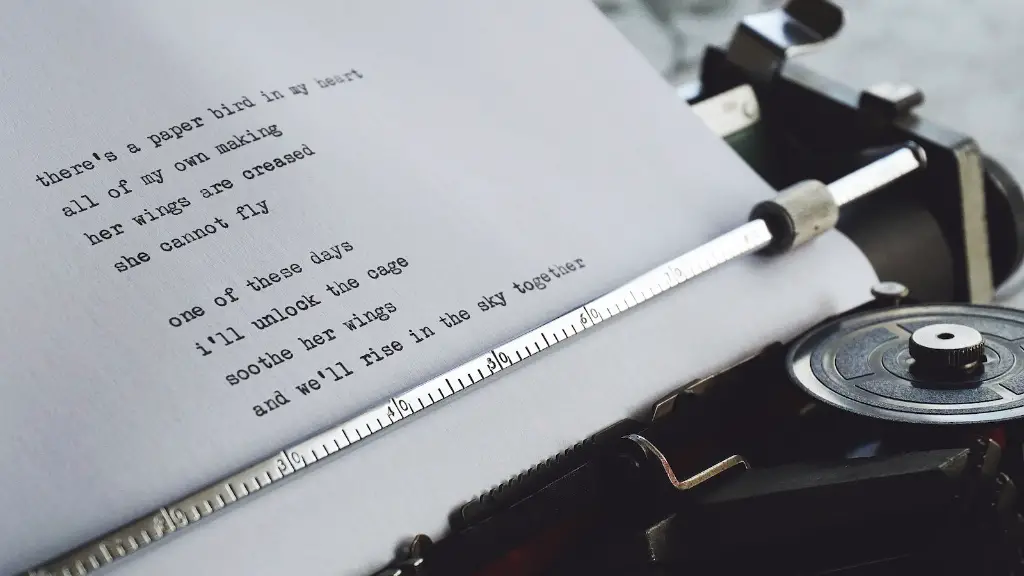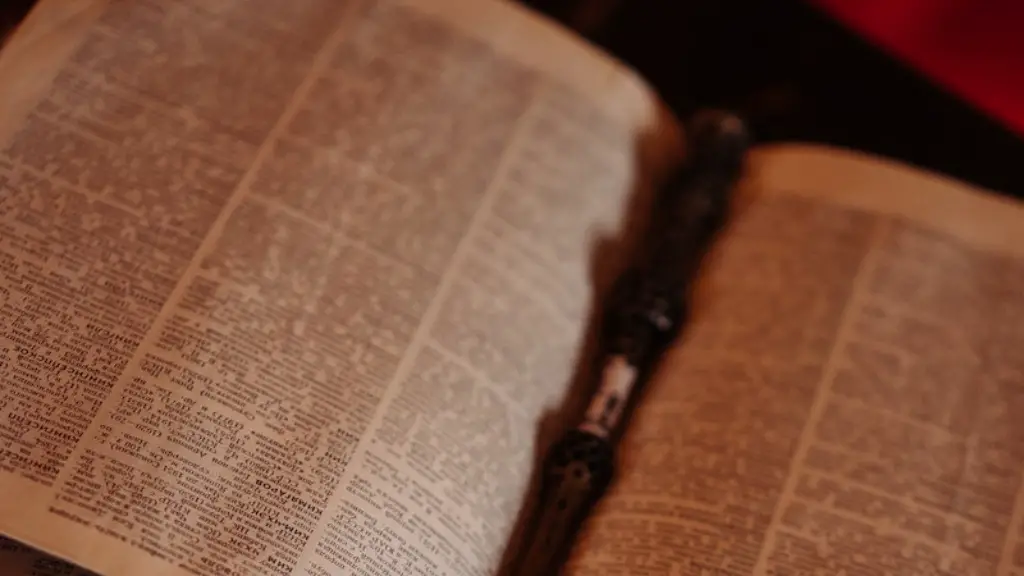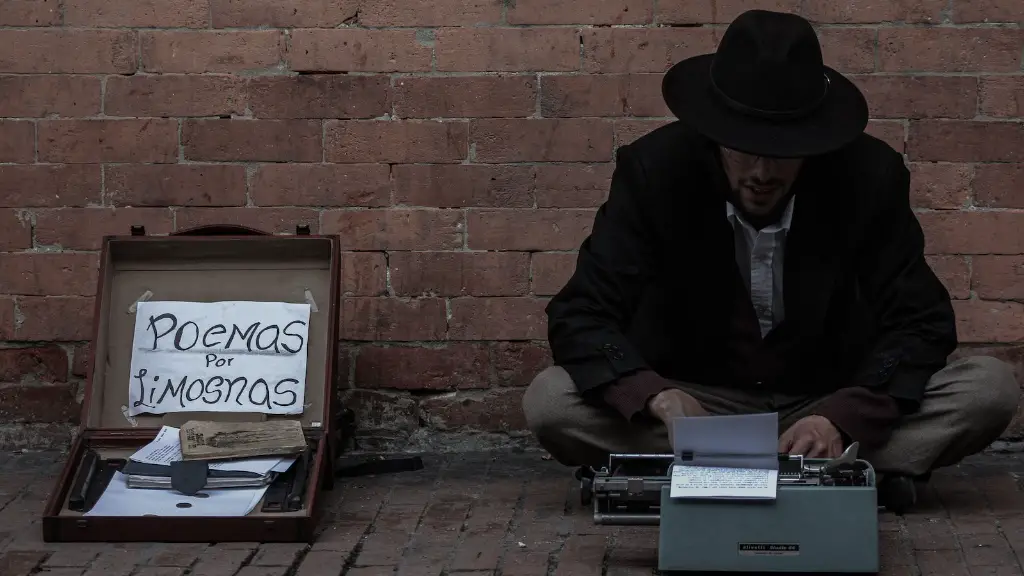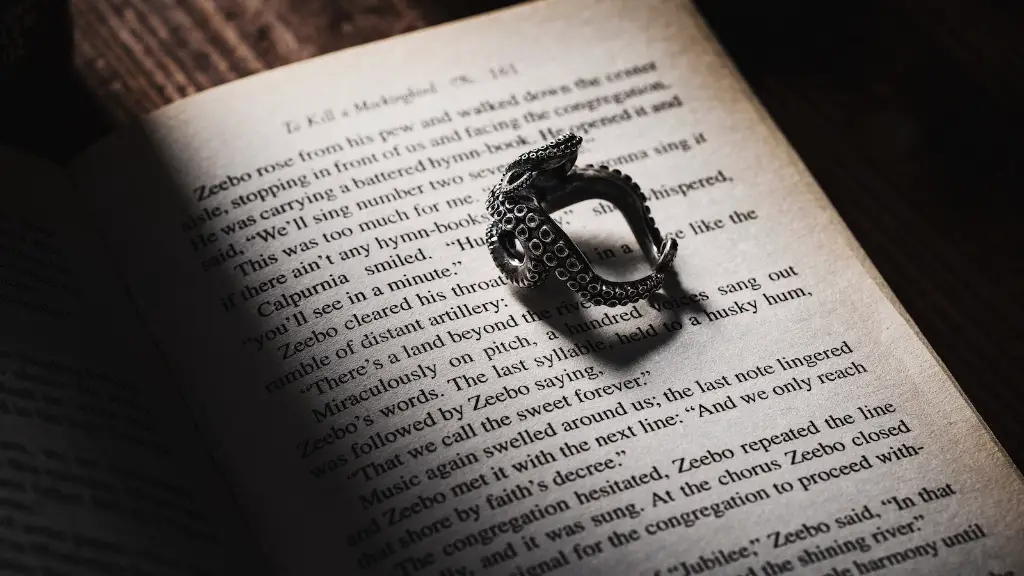Rhythm Pattern in Poetry
Rhythm is a musical term that has been borrowed by poetry and literature to refer to a regular pattern of stressed and unstressed syllables, rather than the more scientific view of an even pattern of pitch.
It is believed that rhythm in poetry activates the reader’s imagination and increases their engagement with the poem. When a person reads poetry, the sights and sounds of the words are powerful, and if the poem has a strong rhythm, the reader’s experience is enhanced.
When looking at a poem, it is also important to recognize that some of the rhythm in a poem may not be apparent in the first reading. Poetry often has layers of sound and syntax that become revealed over multiple readings. By reading poetry aloud, the reader can gain a greater sense of the rhythmical patterns.
Rhythmical patterns in poetry are usually determined by the meter of a poem. Meter is the pattern of stressed and unstressed syllables in each line, which is often equivalent to the number of syllables in a line. The most common meters used in poetry are iambic, trochaic, and anapestic.
Iambic meter is a type of rhythm that has two syllables per line, the first one being unstressed and the second being stressed. This rhythmic structure often creates a natural flow in the poem and is used to create a narrative rhythm.
Trochaic meter is a more playful type of meter that is useful for creating a sense of excitement or joy in the poem. It has two syllables per line, the first one being stressed and the second one being unstressed.
Anapestic meter is another type of meter that can create a sense of movement in a poem. It has three syllables per line, the first two being unstressed and the last one being stressed.
In addition to the meter of a poem, the poet will often make use of rhyme and rhythm to add further emphasis on certain words or concepts. Rhyme is when two words have the same ending sound, or occasionally the same middle sound, creating a logical link between two words. This can add a musical quality to the poem and can emphasize the message of the poem.
Rhythm in poetry can also be used to create an emotional effect. For example, some poems focus on rhythm and lyrical quality to evoke emotion, such as love or sadness. Other poems may use an exaggerated or broken style of rhythm to create an air of hostility or tension. Poets often use rhythm to bring out certain emotions and ideas
Sentence Variation
It is also important to consider sentence variation when analyzing poetic rhythm. Sentence structures that are repetitive can make a poem less pleasing to read, so it is important to vary the lengths of the sentences and the types of phrases used in order to create a more interesting and engaging pattern.
The type of language used in a poem will also affect the overall rhythm of a poem. The use of rhyming words, alliteration and assonance can create a sense of harmony and flow, and make the poem more enjoyable to read. On the other hand, the use of words with many syllables or unfamiliar language can make a poem more difficult to read and can also disrupt the flow.
Writing in different styles or forms can also affect the rhythm of a poem. For example, a sonnet has a specific set of rules, such as the rhyme scheme, the length of the lines, and the type of language used. The rigidity of the form can make the poem easier to read, since the reader will be familiar with the structure. Other forms such as free verse give the poet more freedom to choose the language they use, allowing them to be more expressive and creative.
Creating Meaning
The main purpose of poetic rhythm is to have an effect on the reader. Rhythm can be used to create contrast, such as in poems that are written in a standard meter but have an unexpected phrase or change in rhythm. These unexpected shifts in rhythm can create an interesting tension that can add further meaning to the poem.
Rhythm can also be used to draw the reader’s attention to certain words or ideas, or to emphasize certain themes. By using rhythm to create contrast or pauses, the poet can create a sense of surprise or tension, as well as making the poem memorable and enjoyable to read.
The poet can also draw on their own memories to create a rhythmical pattern. Many poems evoke memories of places, people or experiences, and the rhythmical pattern can help to convey these memories to the reader. This allows the reader to experience the poem in their own way and to interpret the poem in a personal way.
Word Choice
Word choice is also important when creating poetic rhythm. The words used in a poem should be closely linked to the overall sound of the poem and should reflect the tone and emotions that the poet is trying to convey. By choosing words carefully, the poet can create a strong rhythmic pattern, which can be further enhanced by the use of rhyme, assonance and alliteration.
The repetition of certain words or grammatical structures can also be used to enhance the rhythm of the poem. The repetition will create a musical rhythm in the poem, which can also draw attention to certain themes or ideas in the poem.
In addition to word choice, the poet should also consider the shape of the poem. Certain shapes can create a particular kind of rhythm and can make the poem more interesting or meaningful. This could be a short poem written in a single stanza or a poem divided into sections by subject matter or emotion.
Rhythmical Soundscapes
Rhythm in poetry is far more than just a structural device – it can create a rhythmical soundscape that carries the poem and the reader along, allowing them to be immersed in the poem.
Using rhythm, poets can evoke an atmosphere and create a sense of movement in the poem. This could be the sound of a river, or the rhythm of a conversation, or the beat of a drum. By using rhythm in combination with other stylistic devices such as rhyme and word choice, the poet can create a unique rhythmical experience for the reader.
In summary, rhythm pattern in poetry is an important tool for conveying emotion and meaning to the reader. It is created through the use of meter, rhyme, word choice, sentence structure and shape. By carefully crafting a rhythmic pattern, the poet can create a powerful and evocative experience for the reader.
Prosody
Prosody is the study of the rhythm and meter of poems. It looks at the patterns and structures that are used in poetry, in order to create meaning and to evoke emotions and ideas. By analyzing the structure and form of a poem, and looking at the various stylistic devices used, the reader can gain a better understanding of the poem and its meaning.
Prosody also enables the reader to explore and evaluate a poem’s rhythm. By considering the length of the lines, the pattern of stresses and unstresses, and the use of rhyme, the reader can gain an insight into how the rhythm of the poem is affecting the overall message of the poem.
By recognizing the importance of rhythm and meter, the reader can engage more deeply with poetry and express their own views on a poem’s rhythmical properties. In this way, prosody can provide a valuable insight into poetry and can aid the reader in their understanding and appreciation of the poem.
Rhythmic Instruments
Rhythmic instruments can also be used to create an emotional background and to enhance a poem’s rhythm. These can range from drums and stringed instruments to various other sound devices, such as a bell or chimes.
Using rhythmic instruments can help to give a poem a more dynamic and engaging feel. By layering different sounds, the poet can create a unique atmosphere and can bring out the emotion in the poem. The sound of the instruments can capture the reader’s attention and can create a compelling musical experience for the reader.
In conclusion, rhythm pattern in poetry is a powerful tool that can be used to create an emotional atmosphere and to convey powerful messages to the reader. It is created through meter, rhyme, word choice, sentence variation and shape. Furthermore, the use of rhythmical instruments can add an extra level of depth and feeling to a poem.
